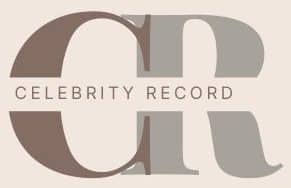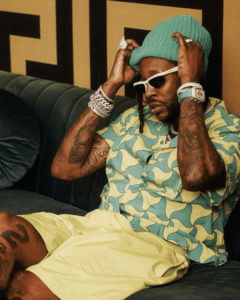Key Takeaways
- Ryan Gosling’s career demonstrates remarkable versatility across genres, from romantic dramas like “The Notebook” to intense crime thrillers like “Drive” and blockbusters like “Barbie.”
- His breakthrough performances in “The Notebook” (2004) and “Half Nelson” (2006) established him as both a commercial star and critically respected actor, earning his first Academy Award nomination.
- Gosling’s collaboration with director Nicolas Winding Refn, particularly in “Drive,” marked a defining era in his career that showcased his ability to convey powerful emotion through minimal dialogue.
- Unlike many Hollywood stars, Gosling balances mainstream commercial projects with artistic independent films, maintaining critical respect while achieving box office success.
- Lesser-known films like “Blue Valentine,” “Lars and the Real Girl,” and “The Place Beyond the Pines” highlight Gosling’s commitment to complex characters and emotional authenticity.
- His evolution from child actor to A-list celebrity features a distinctive minimalist acting style that relies on subtle expressions and deliberate physical presence rather than technical showmanship.
Ryan Gosling has captivated audiences with his remarkable range and compelling performances throughout his career. From indie darlings to blockbuster hits, his filmography showcases an actor who consistently challenges himself with diverse and complex roles.
Whether you’re a longtime fan or just discovering his work, exploring Gosling’s movies reveals an artist who transforms with each character. His evolution from a young talent in “The Notebook” to the stoic driver in “Drive” and the jazz pianist in “La La Land” demonstrates his versatility and commitment to his craft. As you dive into his filmography, you’ll discover why he’s become one of Hollywood’s most respected leading men.
Ryan Gosling’s Rise to Hollywood Stardom
Ryan Gosling’s journey from child actor to A-list celebrity showcases a methodical career trajectory built on selective role choices and exceptional acting range. His breakthrough came with “The Notebook” (2004), where his portrayal of Noah Calhoun established him as a romantic lead and demonstrated his ability to bring emotional depth to characters.
Unlike many of his contemporaries, Gosling strategically moved away from typecast roles, embracing complex characters in independent films. In “Half Nelson” (2006), he delivered a raw performance as a drug-addicted teacher that earned him his first Academy Award nomination. This critical acclaim positioned him alongside respected actors in Hollywood who were known for their craft rather than commercial appeal.
Gosling cemented his status with “Drive” (2011), playing a stoic stuntman/getaway driver with minimal dialogue. His performance relied on physical presence and subtle expressions, expanding industry perception of his capabilities. This period of his career featured collaborations with directors like Nicolas Winding Refn and Derek Cianfrance, further establishing his artistic credibility.
The 2016 musical “La La Land” marked Gosling’s definitive crossover to mainstream stardom, blending his indie sensibilities with commercial appeal. His portrayal of a jazz pianist earned him a Golden Globe and another Oscar nomination. Unlike many actors who pursue EGOT status, Gosling has focused on film rather than expanding to theater or recording.
Recent Ryan Gosling movies like “Blade Runner 2049” and “Barbie” have solidified his versatility, allowing him to move between genres while maintaining critical respect. His carefully curated filmography shows a preference for character-driven stories over franchise obligations, creating a unique position in modern Hollywood where artistic integrity and commercial viability coexist.
Breakout Roles: The Notebook and Half Nelson
Ryan Gosling’s trajectory from promising talent to Hollywood star was cemented by two defining performances that showcased his remarkable range as an actor. These pivotal roles demonstrated his ability to tackle both commercial romance and gritty independent drama with equal conviction, establishing him as more than just another handsome face in the industry.
The Notebook’s Cultural Impact
“The Notebook” (2004) transformed Gosling into a household name and redefined the modern romance genre. His portrayal of Noah Calhoun opposite Rachel McAdams created one of cinema’s most memorable love stories, with their rain-soaked kiss becoming an iconic romantic moment. The film grossed over $115 million worldwide against a modest $29 million budget, proving Gosling’s commercial appeal. Unlike many actors who might have capitalized on this success by accepting similar romantic leads, Gosling deliberately avoided being typecast. The film’s enduring popularity on streaming platforms and its continued cultural references in TV shows and social media memes demonstrate its lasting impact almost two decades later.
Critical Acclaim for Half Nelson
Following “The Notebook,” Gosling made the surprising choice to star in the low-budget independent film “Half Nelson” (2006). His portrayal of Dan Dunne, a drug-addicted inner-city teacher forming an unlikely friendship with one of his students, earned him his first Academy Award nomination. Critics praised his nuanced performance that avoided typical addiction stereotypes while creating a deeply flawed yet sympathetic character. The film grossed just $4.9 million but established Gosling as a serious actor willing to take artistic risks. This critical success positioned him differently from contemporaries like Miles Teller who would later follow similar paths between commercial and indie projects. “Half Nelson” became the blueprint for Gosling’s career strategy: balancing mainstream appeal with challenging roles that showcase his exceptional acting abilities.
The Drive Era: Defining Gosling’s Career
“Drive” (2011) marked a pivotal moment in Ryan Gosling’s career, establishing him as more than just a romantic lead but as a versatile actor capable of intense, methodical performances. This neo-noir crime thriller showcased Gosling’s ability to communicate volumes through minimal dialogue and restrained expressions.
Collaboration with Nicolas Winding Refn
Gosling’s partnership with Danish director Nicolas Winding Refn produced two stylistically distinctive films that elevated both their careers. In “Drive,” their first collaboration, Refn’s atmospheric direction paired perfectly with Gosling’s controlled performance as the unnamed Driver. The film’s success led to their second project, “Only God Forgives” (2013), set in Bangkok’s criminal underworld. Though polarizing with critics, this film cemented their artistic relationship and demonstrated Gosling’s willingness to take creative risks that many established actors avoid. The Refn-Gosling collaboration stands in contrast to the franchise-focused partnerships seen with actors like Tom Hardy in his movies and TV shows, as they prioritized artistic vision over commercial formulas.
Iconic Performances in Stylized Films
Gosling’s filmography during this period reveals his attraction to visually distinctive projects with strong directorial voices. Beyond “Drive,” his performances in “Blade Runner 2049” and “The Place Beyond the Pines” showcase his comfort with stylized cinema that balances visual splendor with character depth. In “Blade Runner 2049,” Gosling’s portrayal of K demonstrated his ability to carry a philosophical science fiction narrative while working alongside veterans like Harrison Ford. This approach to selecting roles shares similarities with how actors like Ryan Gosling and Chadwick Boseman built their careers—choosing projects that balance artistic merit with commercial viability. Gosling’s performances in these stylized films consistently rely on subtle physical acting and restrained emotion, creating a signature screen presence that’s immediately recognizable across his diverse roles.
Versatility in Genre: From Comedy to Science Fiction
Ryan Gosling’s filmography showcases his remarkable range across diverse genres, allowing him to evolve beyond dramatic roles into comedy, action, and science fiction. His ability to adapt his acting style to different narrative requirements has cemented his reputation as one of Hollywood’s most versatile performers, with each new project revealing another dimension of his talent.
Comedic Turns in Crazy, Stupid, Love and The Nice Guys
Gosling’s comedic abilities shine through his perfectly timed performances in romantic comedy “Crazy, Stupid, Love” (2011) and action comedy “The Nice Guys” (2016). In “Crazy, Stupid, Love,” he displays impeccable comic timing as Jacob Palmer, a suave ladies’ man who mentors Steve Carell’s recently divorced character. The famous “Dirty Dancing” lift scene and his chemistry with Emma Stone created one of the most memorable moments in modern romantic comedies. His natural charm and self-deprecating humor revealed a lighter side that surprised audiences familiar with his more intense roles.
“The Nice Guys” paired Gosling with Russell Crowe in a 1970s buddy cop comedy that showcased his physical comedy skills. As Holland March, a bumbling private investigator, Gosling demonstrates exceptional physical comedy—particularly in scenes involving bathroom stalls and broken glass—proving he’s just as comfortable drawing laughs as he is conveying emotional depth. Director Shane Black utilized Gosling’s ability to balance absurdist humor with genuine character development, resulting in a performance that critics praised for its comedic precision and vulnerability.
Exploring the Future in Blade Runner 2049
Gosling’s venture into science fiction with “Blade Runner 2049” (2017) demonstrated his capacity to carry philosophically complex narratives in visually stunning worlds. As Officer K, a replicant blade runner searching for his identity, Gosling delivers a masterfully restrained performance that captures the existential crisis at the heart of the film. His minimalist acting style perfectly suits the dystopian future crafted by director Denis Villeneuve, allowing subtle facial expressions and measured movements to convey profound emotional states.
The film required Gosling to maintain an enigmatic presence while gradually revealing deeper layers of humanity—a challenge he meets through carefully calibrated emotional reveals. His scenes with Harrison Ford resonate with unspoken tension and mutual respect, adding depth to the sequel’s exploration of consciousness and memory. Though vastly different from his comedic work, Gosling’s approach to science fiction demonstrates the same commitment to character authenticity that defines his entire filmography. “Blade Runner 2049” stands as evidence of his willingness to engage with complex thematic material while maintaining his distinctive screen presence across genres.
Recent Blockbusters: Barbie and The Fall Guy
Ryan Gosling has embraced high-profile commercial projects in recent years, reestablishing himself as a box office draw while maintaining his artistic integrity. His mainstream resurgence has been marked by two significant blockbusters that showcase his range as a performer.
Gosling’s Mainstream Resurgence
Gosling’s return to mainstream cinema represents a strategic shift in his career trajectory after years of prioritizing indie films. In “Barbie” (2023), he delivered a scene-stealing performance as Ken, demonstrating his comedic timing and willingness to embrace campy entertainment. The film, directed by Greta Gerwig, became a cultural phenomenon and one of the highest-grossing movies of 2023, introducing Gosling to a new generation of viewers. Unlike contemporaries who’ve built careers on franchise films like Tom Hardy’s work in superhero movies, Gosling has maintained selectivity even in his commercial choices.
This momentum continued with “The Fall Guy” (2024), where Gosling portrays a Hollywood stuntman caught in an action-comedy adventure. The film pays homage to the 1980s television series while showcasing Gosling’s physical abilities and charm. His performance demonstrates versatility comparable to that seen in various Ryan Gosling movies throughout his career, balancing humor and action with emotional depth. The project reunited him with Emily Blunt following her work with notable performers like Tom Cruise, creating a partnership that critics praised for its authentic chemistry.
These recent blockbusters have cemented Gosling’s unique position in Hollywood—an actor who can draw audiences to theaters while maintaining the artistic credibility he established in his earlier work. Unlike some of his peers focused on franchise building, Gosling continues to select roles based on character complexity rather than commercial potential alone.
Underrated Ryan Gosling Movies Worth Watching
While blockbusters like “The Notebook” and “La La Land” have defined Ryan Gosling’s career, his filmography contains several overlooked gems that showcase his exceptional range as an actor. These lesser-known works reveal the depth of his talent that true cinema enthusiasts appreciate.
“Blue Valentine” (2010)
“Blue Valentine” presents one of Gosling’s most raw and vulnerable performances. In this intimate drama, he stars opposite Michelle Williams as Dean, a husband in a dissolving marriage. The film intercuts between the couple’s hopeful beginnings and painful end, with Gosling delivering an emotionally transparent portrayal that earned critical acclaim but limited commercial success. His immersive preparation for the role included living with Williams as a family for a month, creating genuine chemistry that translates powerfully on screen.
“Lars and the Real Girl” (2007)
In “Lars and the Real Girl,” Gosling transforms into a socially awkward man who develops a relationship with a life-sized doll he treats as real. What could have been an awkward premise becomes a touching exploration of community and mental health through Gosling’s nuanced performance. He portrays Lars with such sincerity and empathy that viewers find themselves invested in this unconventional story. The film exemplifies Gosling’s ability to find humanity in unusual characters, a talent he’s demonstrated consistently throughout his career.
“The Place Beyond the Pines” (2012)
“The Place Beyond the Pines” reunited Gosling with “Blue Valentine” director Derek Cianfrance for an ambitious multi-generational crime drama. As Luke, a motorcycle stunt rider who turns to bank robbery to support his child, Gosling delivers a haunting performance that anchors the film’s first act. His tattoo-covered, quietly intense character embodies a complex mix of masculinity, desperation, and tenderness that resonates throughout the entire narrative. Despite appearing in only a portion of the film, his presence looms over the entire story.
“Stay” (2005)
This psychological thriller features Gosling as Henry, a troubled art student planning suicide. The film’s experimental narrative structure and dream-like quality didn’t connect with mainstream audiences, but Gosling’s committed performance stands out. Working alongside established actors like Ewan McGregor and Naomi Watts early in his career, he demonstrates the intensity and dedication that would become hallmarks of his acting style. The film’s unconventional approach to storytelling complements Gosling’s willingness to take creative risks.
“First Man” (2018)
Though “First Man” received critical acclaim, this biopic of astronaut Neil Armstrong didn’t achieve the commercial success of other Ryan Gosling movies. His restrained portrayal of Armstrong captures the astronaut’s stoic nature and unexpressed grief following his daughter’s death. Gosling conveys volumes through minimal dialogue, relying instead on subtle expressions that reveal Armstrong’s internal struggles. The film highlights Gosling’s skill at portraying emotionally complex historical figures, similar to the dramatic depth seen in many acclaimed tom hardy movies and tv shows.
Evolution of Gosling’s Acting Style
From TV Heartthrob to Serious Method Actor
Ryan Gosling’s transformation from a Disney Channel star to a respected method actor represents one of Hollywood’s most fascinating evolutions. His early career included appearances in shows like “The Mickey Mouse Club” alongside future stars, providing him with fundamental performance skills. Unlike many child actors who struggle with the transition to adult roles, Gosling methodically developed his craft through increasingly complex characters. His early film work showed glimpses of the intense commitment that would later define his approach, laying the groundwork for his signature acting style focused on emotional authenticity rather than technical showmanship.
Developing a Minimalist Approach
Gosling’s minimalist acting technique emerged as his defining characteristic across his most acclaimed ryan gosling movies. This approach relies on subtle expressions, deliberate physical movements, and measured dialogue delivery to convey profound emotion. In “Drive,” his character speaks only 116 words throughout the entire film, yet communicates volumes through his eyes and body language. This economical style creates magnetic screen presence even in silence. Gosling’s collaborations with directors like Derek Cianfrance in “Blue Valentine” further refined this technique, where he improvised extensively within carefully constructed emotional frameworks, creating moments of raw authenticity rarely seen in mainstream cinema.
Balancing Commercial Appeal with Artistic Integrity
Gosling’s career demonstrates remarkable balance between commercial viability and artistic exploration. Unlike contemporaries who might choose either blockbusters or indie prestige projects, he’s navigated both worlds simultaneously. His role in “La La Land” showcases this duality perfectly—performing in a commercial musical while bringing unexpected depth to what could have been a one-dimensional character. More recently, Gosling’s portrayal of Ken in “Barbie” revealed his ability to embrace camp while delivering nuanced commentary on masculinity. This versatility distinguishes him from actors who remain confined to particular genres, allowing him to maintain creative independence while achieving commercial success that funds his more experimental work.
Conclusion
Ryan Gosling’s journey through Hollywood stands as a masterclass in artistic evolution. From romantic heartthrob to comedic sensation to action star he’s crafted a career defined by bold choices and remarkable range.
What makes Gosling truly special is his ability to reinvent himself while maintaining authenticity. Whether he’s breaking hearts in “The Notebook” driving silently through neon-lit streets or embracing the absurdity of Ken his commitment to character never wavers.
As you explore his filmography you’ll discover an actor who consistently challenges himself and his audience. Gosling’s career reminds us that true star power comes not just from screen presence but from the courage to take risks and the talent to make each role uniquely memorable.
Frequently Asked Questions
What was Ryan Gosling’s breakthrough role?
Ryan Gosling’s breakthrough came with “The Notebook” (2004), where he established himself as a romantic lead. The film transformed him into a household name and redefined the modern romance genre. Despite this success, Gosling deliberately avoided being typecast by seeking more complex characters in independent films afterward.
How did Ryan Gosling avoid being typecast after “The Notebook”?
After “The Notebook,” Gosling strategically chose roles in independent films with complex characters. His Academy Award-nominated performance in “Half Nelson” (2006) showcased his ability to tackle gritty drama. By consistently selecting diverse and challenging roles across different genres, he established himself as a versatile actor rather than just a romantic lead.
What is considered a pivotal moment in Gosling’s career?
His role in “Drive” (2011) marked a pivotal moment in Gosling’s career. The collaboration with director Nicolas Winding Refn established him as a versatile actor capable of intense performances. This film showcased his minimalist acting style, where he communicated volumes through subtle expressions and physical movements with minimal dialogue.
How has Gosling’s acting style evolved over time?
Gosling evolved from a Disney Channel star to a respected method actor. His minimalist approach features subtle expressions and deliberate physical movements that convey profound emotion with minimal dialogue. This technique was prominently displayed in “Drive” and has become a defining characteristic of his performances across various genres.
What are some underrated films in Gosling’s filmography?
Some underrated gems include “Blue Valentine” (2010), featuring his raw portrayal of a dissolving marriage; “Lars and the Real Girl” (2007), showcasing his nuanced performance as a socially awkward man; and “The Place Beyond the Pines” (2012), where he anchors a multi-generational crime drama. “Stay” (2005) and “First Man” (2018) also highlight his range.
How has Gosling balanced commercial success with artistic integrity?
Gosling maintains a careful balance by selecting roles based on character complexity rather than commercial potential alone. He navigates between blockbusters like “Barbie” (2023) and indie projects, maintaining creative independence while achieving box office success. This approach has allowed him to build a diverse filmography that appeals to both critics and mainstream audiences.
What genres has Ryan Gosling explored in his career?
Gosling has demonstrated remarkable range across diverse genres. He’s performed in dramas (“Blue Valentine”), romances (“The Notebook”), action films (“Drive”), comedies (“Crazy, Stupid, Love” and “The Nice Guys”), science fiction (“Blade Runner 2049”), and even musicals (“La La Land”). His recent work includes the comedy “Barbie” and action-comedy “The Fall Guy.”
What characterizes Gosling’s recent return to mainstream cinema?
Gosling’s mainstream resurgence features high-profile commercial projects while maintaining his artistic integrity. His scene-stealing performance as Ken in “Barbie” (2023) became a cultural phenomenon, showcasing his comedic timing. “The Fall Guy” (2024) further demonstrated his versatility in action-comedy. These films introduced him to new audiences while satisfying his established fanbase.






